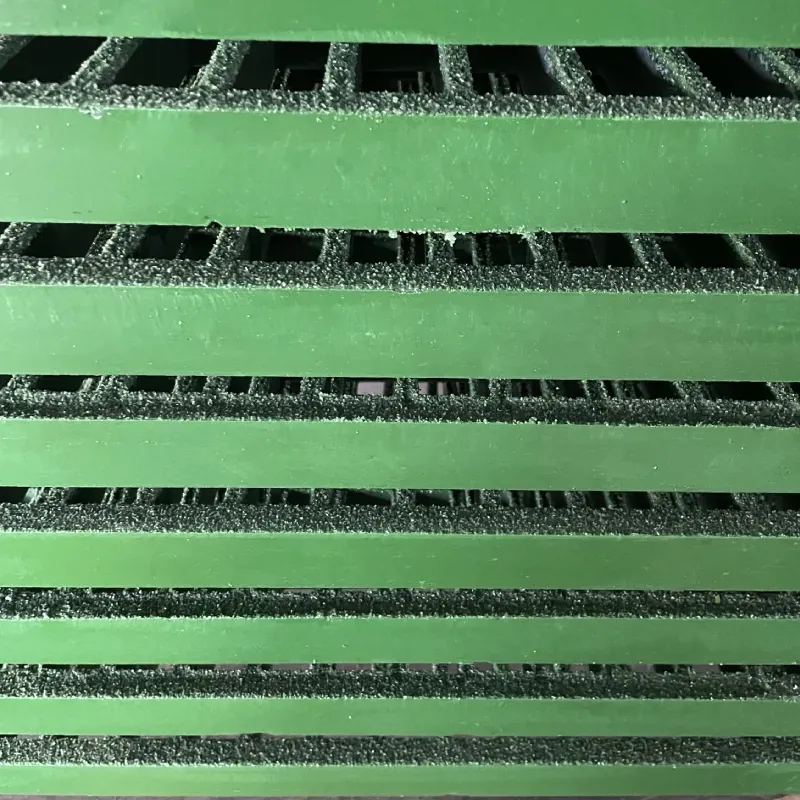loading...
- No. 9, Xingyuan South Street, Dongwaihuan Road, Zaoqiang County, Hengshui, Hebei, China
- admin@zjcomposites.com
- +86 15097380338
- Welcome to visit our website!
Solar Energy Solutions for FRP Walkways and Sustainable Construction Practices
Exploring the Benefits of FRP Walkway Solar Solutions
As societies increasingly turn to renewable energy sources, innovative applications of solar technology have emerged across various sectors. One such development is the integration of solar power into fiber-reinforced polymer (FRP) walkways. This combination offers a unique solution that not only enhances the functionality of walkways but also contributes positively to environmental sustainability.
What is FRP?
Fiber-reinforced polymer (FRP) is a composite material made of a polymer matrix reinforced with fibers, such as glass, carbon, or aramid. Renowned for its strength, durability, and lightweight characteristics, FRP is utilized in diverse applications, including construction, automotive, and aerospace industries. Its resistance to corrosion and harsh weather conditions makes it an excellent choice for outdoor structures, such as walkways.
The Integration of Solar Technology
The idea of incorporating solar panels into FRP walkways is a revolutionary approach that harnesses renewable energy in an efficient manner. These walkways can be designed with embedded solar cells or modular solar panel sections that capture sunlight and convert it into electricity. This integration allows the walkways not only to serve their primary function as pedestrian or vehicular paths but also to contribute to energy generation.
Benefits of FRP Walkway Solar Solutions
1. Sustainability The foremost advantage of solar-integrated FRP walkways is their contribution to sustainability. By generating clean energy, these walkways help reduce the carbon footprint associated with traditional energy sources. This shift towards renewable energy supports global efforts to combat climate change and promote greener urban environments.
2. Energy Independence With the capability to generate solar energy on-site, these walkways provide a degree of energy independence. This is especially valuable in remote locations or communities that lack reliable access to the electrical grid. The generated power can be used for various purposes, including street lighting, security systems, or powering nearby facilities.
frp walkway solar

3. Durability and Low Maintenance FRP materials are known for their long lifespan and resistance to challenges like corrosion, moisture, and temperature fluctuations. This durability means that solar-integrated FRP walkways require less maintenance over time compared to traditional materials, leading to lower long-term costs.
4. Aesthetic Appeal Modern FRP walkways can be designed to be visually appealing, with customizable colors and shapes. When combined with solar panels, these walkways can blend functionality with aesthetic considerations, making them suitable for urban developments, parks, and recreational areas.
5. Reduced Heat Island Effect Urban areas often experience the heat island effect, where temperatures are significantly higher than in surrounding rural areas due to human activities and infrastructure. By incorporating solar walkways, cities can help mitigate this effect, as the choice of materials and design can promote better airflow and thermal management.
6. Innovative Use of Space As urban areas become increasingly dense, the need for creative space utilization grows. Solar-integrated FRP walkways make efficient use of horizontal spaces that would otherwise remain unproductive, transforming them into valuable energy-generating assets.
Implementation Challenges
While the benefits of FRP walkway solar solutions are substantial, several challenges must be addressed. Initial installation costs, technological limitations in solar efficiency, and the need for regulatory approvals can be significant barriers. However, as solar technology continues to advance and the public demand for sustainable solutions grows, these challenges may become increasingly manageable.
Conclusion
The fusion of FRP walkways with solar technology represents a proactive step toward sustainable infrastructure. By adopting solar-integrated solutions, communities can enhance their energy generation capabilities while promoting environmental stewardship. As innovations continue to emerge, the future of urban planning may very well hinge on these creative adaptations of solar technology, paving the way for more sustainable and resilient cities.
-
The Rise of FRP Profiles: Strong, Lightweight, and Built to LastNewsJul.14,2025
-
SMC Panel Tanks: A Modern Water Storage Solution for All EnvironmentsNewsJul.14,2025
-
GRP Grating: A Modern Solution for Safe and Durable Access SystemsNewsJul.14,2025
-
Galvanized Steel Water Tanks: Durable, Reliable, and Ready for UseNewsJul.14,2025
-
FRP Mini Mesh Grating: The Safer, Smarter Flooring SolutionNewsJul.14,2025
-
Exploring FRP Vessels: Durable Solutions for Modern Fluid HandlingNewsJul.14,2025
-
GRP Structures: The Future of Lightweight, High-Performance EngineeringNewsJun.20,2025
